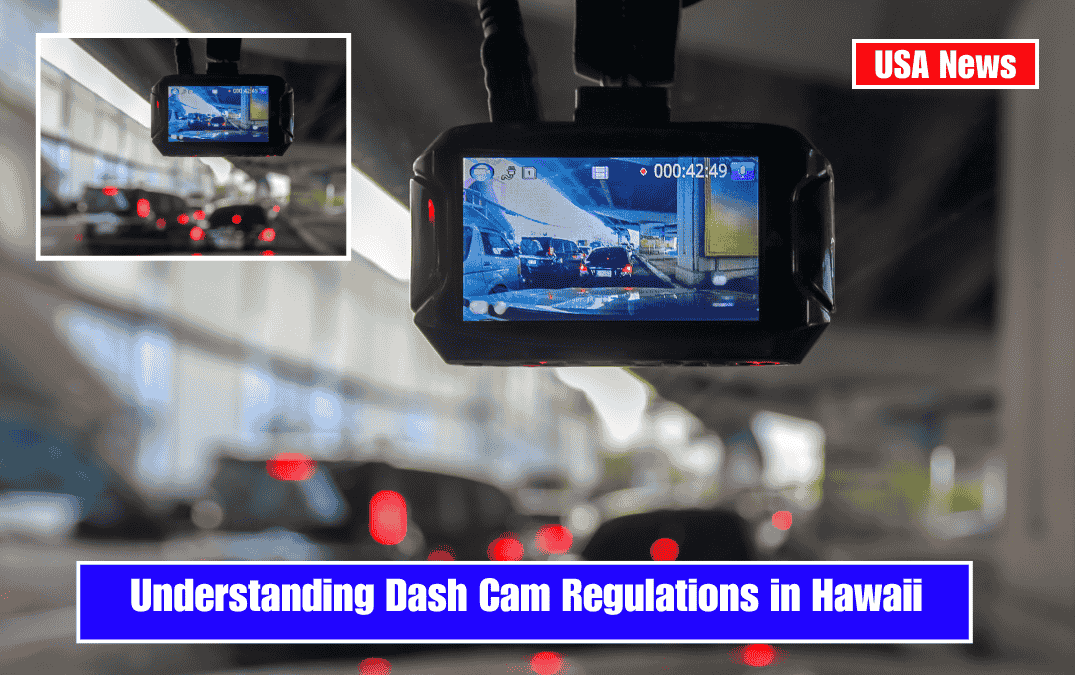Dash cams are increasingly popular among Hawaii drivers for documenting accidents, deterring theft, and providing evidence in legal disputes. However, Hawaii has specific laws governing the installation and use of dash cams. Here’s what you need to know to ensure you’re compliant and avoid fines or legal issues.
Are Dash Cams Legal in Hawaii?
Yes, dash cams are legal in Hawaii. Drivers are allowed to install and use dash cams in their vehicles, but there are clear rules about where and how these devices can be mounted to ensure they do not obstruct the driver’s view or create safety hazards.
Mounting Requirements
Hawaii’s regulations are precise about dash cam placement:
- Windshield Placement: Dash cams can be installed on the top or bottom corners of the windshield. The device must not exceed five square inches in size, though some sources note a range of five to seven square inches.
- Dashboard and Rear Window: Drivers may also mount dash cams on the dashboard or rear window, provided the device does not obstruct the driver’s view.
- Obstruction: Any dash cam, regardless of location, must not block the driver’s line of sight or interfere with airbag deployment. Improper placement—such as in the middle of the windshield—can result in fines or the footage being inadmissible in court.
Summary Table: Mounting Rules in Hawaii
| Location | Allowed? | Size Limit | Notes |
|---|---|---|---|
| Top/bottom windshield corners | Yes | 5–7 sq. inches | Must not block driver’s view |
| Dashboard | Yes | No specific limit | Must not obstruct view |
| Rear window | Yes | No specific limit | Must not obstruct view |
| Center windshield | No | N/A | Not allowed; considered obstruction |
Audio Recording and Privacy Laws
- Consent Requirements: Hawaii is generally considered a single-party consent state for audio recording, meaning you can record conversations in your vehicle as long as one party (which can be you) consents to the recording.
- Best Practice: If you frequently have passengers, especially those who are unaware of the dash cam, it is advisable to inform them that audio and video may be recorded to avoid potential privacy concerns.
- Invasion of Privacy: While dash cams are legal, using them to record private property or conversations without consent outside the vehicle could be considered an invasion of privacy.
Dash Cam Footage in Legal Proceedings
- Admissibility: Dash cam footage is generally admissible in Hawaii courts if it is obtained legally and the device was mounted in compliance with state regulations.
- Improper Placement: If your dash cam is installed in violation of Hawaii’s mounting laws (e.g., obstructing the view), you may face fines and the footage could be excluded from legal proceedings.
Commercial Vehicles
- Commercial Use: Hawaii’s dash cam laws also apply to commercial vehicles. Cameras must be mounted in accordance with the same size and placement restrictions as private vehicles.
Key Takeaways and Best Practices
- Dash cams are legal in Hawaii but must be mounted in the top or bottom corners of the windshield (5–7 square inches), or on the dashboard or rear window, without obstructing the driver’s view.
- Hawaii is a single-party consent state for audio recording, but informing passengers is recommended to avoid disputes.
- Improperly placed dash cams can result in fines and potentially render footage inadmissible in court.
- For maximum compliance and safety, always check your dash cam’s placement and inform passengers of recording.
By following these regulations, Hawaii drivers can benefit from the protection dash cams offer while staying within the law.
SOURCES:-
[1] https://www.ddpai.com/blog/dash-cam-laws/
[2] https://facit.ai/insights/dash-cam-laws-by-state
[3] https://matrackinc.com/dash-cam-laws-by-states/
[4] https://gpstrackit.com/blog/what-are-the-dashcam-regulations-in-each-state/
[5] https://www.gpsinsight.com/blog/are-dash-cameras-legal-in-commercial-vehicles/








